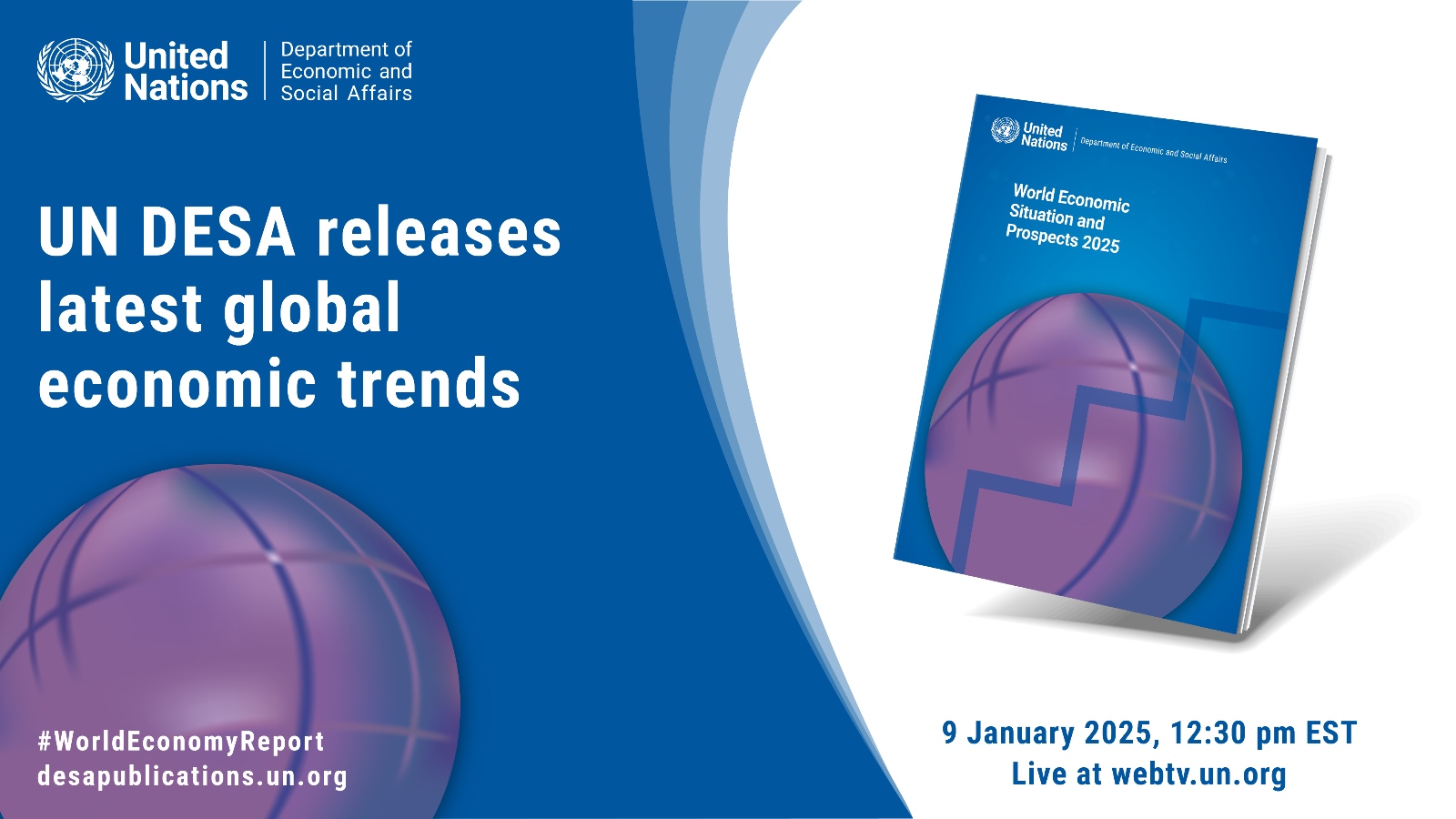
"Countries cannot ignore these perils. In our interconnected economy, shocks on one side of the world push up prices on the other. Every country is affected and must be part of the solution—building on progress made. We’ve set a path. Now it’s time to deliver. Together, let’s make 2025 the year we put the world on track for a prosperous, sustainable future for all."
- António Guterres, Secretary-General of the United Nations.
Despite falling inflation, improving labour market conditions, and monetary easing, global growth is projected to remain below the pace seen before the pandemic, and the world economy continues to face significant uncertainties. This continues to gravely impact progress towards the Sustainable Development Goals (SDGs), especially for many developing countries that are still suffering from the accumulated impacts of successive crises.
The UN World Economic Situation and Prospects 2025 presents the global and regional economic outlooks for the coming year, underscoring the importance of global cooperation and prudent policies to lift growth and place it on a stable and equitable pathway that can accelerate progress towards the SDGs. This year’s thematic chapter takes a deep dive into the subject of critical minerals for the energy transition that can ramp up climate action while presenting opportunities for many developing countries to create jobs, generate public revenues, and reduce poverty and inequality.
Access the full report here.
Access the key messages here.
Click here to watch the Press Conference: UN DESA on the launch of the World Economic Situation and Prospects (WESP) report 2025.
UN DESA Voice - Behind the numbers of a new report on the global economy
What's the story behind the global economy beyond the numbers, and what's the financial forecast for 2025?
Two UN DESA experts tell us what's different this year and what we can expect from the latest World Economy Report coming out on 9 January.
Report Highlights
Global economic growth is projected to be subdued, but stable in the near-term, constrained by the lingering effects of recent crises, and persistent structural challenges including sluggish productivity growth, insufficient investment, and high levels of public debt. While global inflation continues to ease, escalating geopolitical tensions and climate shocks pose risks of reigniting inflationary pressures.
Muted global growth threatens to hinder progress towards the Sustainable Development Goals (SDGs), especially in vulnerable and low-income countries. Strengthened international cooperation, along with innovative financing solutions, will remain critical for closing the widening investment gaps and boosting investments across the world in clean energy, infrastructure, healthcare, and education.
Shrinking fiscal space in developing countries—exacerbated by rapidly rising debt service costs and mounting public debt—must be addressed through a combination of international cooperation and domestic measures. Resolving debt challenges, curbing illicit financial flows, and strengthening domestic resource mobilization contribute towards increasing public revenues that can be directed towards sustainable development.
Critical minerals—vital for accelerating transition and achieving net-zero carbon emissions by 2050— present significant opportunities to accelerate sustainable development in resource-rich developing economies. However, unlocking this potential requires strategic national policies, sustainable practices, and expanded international cooperation to tackle the complex economic, social, and environmental challenges associated with the extraction, processing, and utilization of critical minerals.
To find out more about the World Economic Situation and Prospects 2025, click here.
Source: UN DESA
 Welcome to the United Nations
Welcome to the United Nations